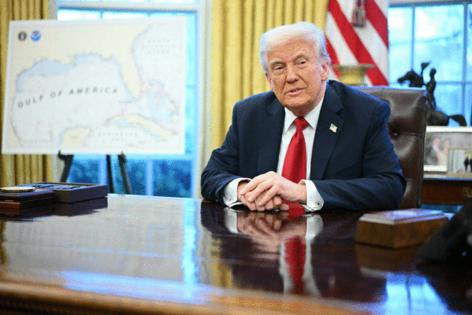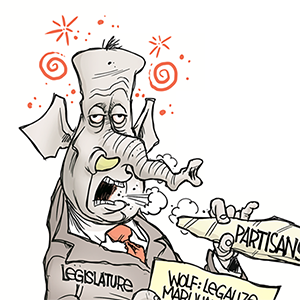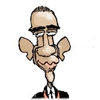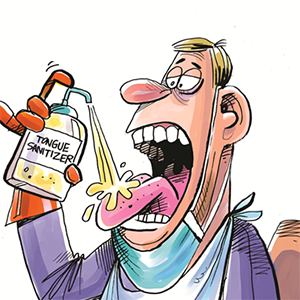Trump says countries will face tariffs ranging from 15% to 50%
Published in Political News
U.S. President Donald Trump suggested that he would not go below 15% as he sets so-called reciprocal tariff rates ahead of an Aug. 1 deadline, an indication that the floor for the increased levies was rising.
“We’ll have a straight, simple tariff of anywhere between 15% and 50%,” Trump said Wednesday at an AI summit in Washington. “A couple of — we have 50 because we haven’t been getting along with those countries too well.”
Trump’s comment declaring that the tariffs would begin at 15% represented the latest twist in his effort to impose duties on nearly every U.S. trading partner, and the latest indication that Trump was looking to more aggressively impose the levies on exports from countries outside the small group that so far has been able to broker trade frameworks with Washington.
Trump earlier this month said that more than 150 countries would receive a letter including a tariff rate of “probably 10 or 15%, we haven’t decided yet.” Commerce Secretary Howard Lutnick told CBS News on Sunday that small countries including “the Latin American countries, the Caribbean countries, many countries in Africa” would have a baseline tariff of 10%. And at the first announcement of the tariffs in April, Trump unveiled a universal tariff of 10% on nearly every country.
While Trump and his advisers initially expressed hopes of securing multiple deals, the president has been touting the tariff letters themselves as “deals” and suggesting that he is uninterested in back-and-forth negotiations. Still, he has left the door open for countries to make agreements that could lower those rates.
On Tuesday, Trump announced he was reducing a threatened 25% tariff on Japan to 15% in exchange for the country removing restrictions on some U.S. products as well as offering to back a $550 billion investment fund.
The White House has also discussed a similar fund with South Korea, a nation also focused on reaching a 15% rate including on autos, according to people familiar with the matter. And the Philippines is aiming to bring down its own tariff rate to the 15% level from the current 19% rate, according to the country’s Ambassador to the U.S. Jose Manuel Romualdez.
Meantime, officials in Vietnam are weighing the likely cost of their deal. Hanoi estimates its exports to the U.S. could decline by as much as a third if higher tariffs announced by Trump take effect, an internal government assessment shows.
Other nations, including India and members of the European Union, are still pushing for an agreements before the heightened tariffs go into effect.
On Wednesday, Trump said he would “have a very, very simple tariff for some of the countries” because there were so many nations that “you can’t negotiate deals with everyone.” He said talks with the European Union were “serious.”
“If they agree to open up the union to American businesses, then we will let them pay a lower tariff,” Trump said.
-----------
—With assistance from Katia Dmitrieva and Malcolm Scott.
©2025 Bloomberg L.P. Visit bloomberg.com. Distributed by Tribune Content Agency, LLC.

























































Comments